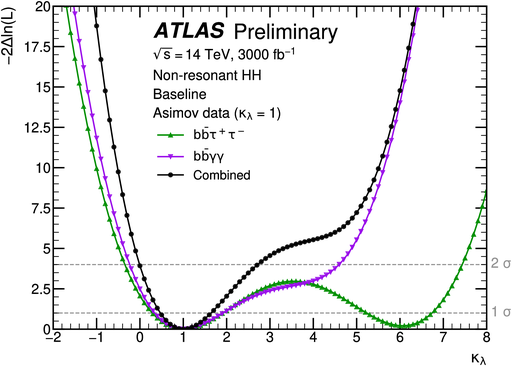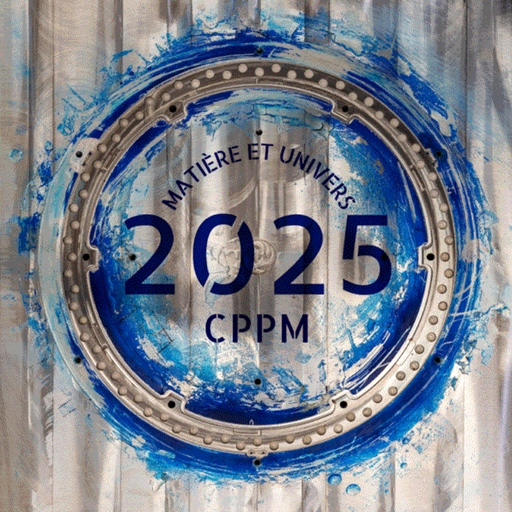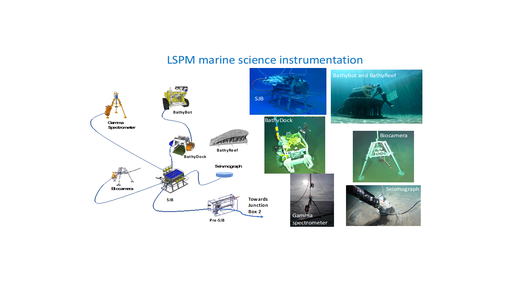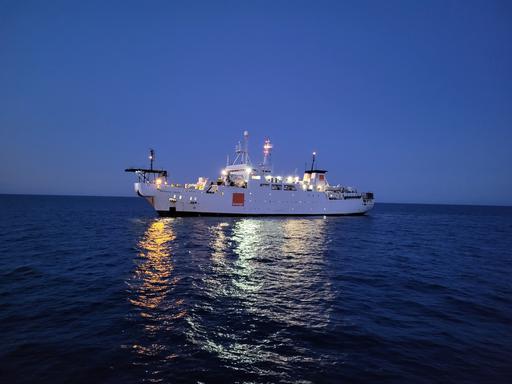Best wishes
Best wishes for a happy new year!
Cover: Titanium ring - designed by CPPM's mechanics department - supporting a 300 mm diameter disc of the MadMax* experiment prototype, whose ambitious challenge is to unravel the mystery of dark matter. A totally new experimental device, designed to unearth a new elementary particle known as "axion". Installed at CERN, the prototype recently demonstrated its ability to amplify the electromagnetic waves emitted by axions in a magnetic field, setting the world’s best limits for axions. A feat that opens a new chapter in the hunt for the axion.
- Magnetized disc and Mirror axion experiment - https://madmax.mpp.mpg.de
The animated card: https://www.cppm.in2p3.fr/transfert/CARTEVOEUX/animation-cv-cppm-25-v4-compress.gif
Dernière modification: Jan 14, 2025, 4:29:25 PMThree more detection units for KM3NeT/ORCA
During a two days sea operation, 27-28 April 2023, three detection units were successfully connected to the ORCA detector of KM3NeT in a record time of just over 24 hours. In addition, an acoustic beacon was recovered for battery replacement. The total number of deployed ORCA units is now 18, as visible in the sonar scan above.
As usual, the operation was performed with two ships: the Castor of Foselev, for deployment of the detection units, and the Janus II of SAAS (formerly Comex), equipped with a deep-sea remotely operated vehicle, for submarine operations.
Many thanks to the crews offshore as well as to the team who performed the functional tests of the new detection units from the shore station!
More informations: https://www.km3net.org/category/news/
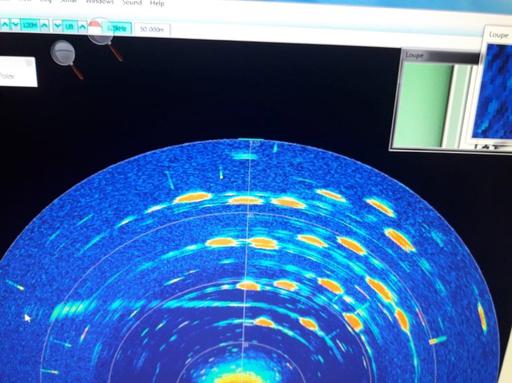
Connection of new marine science instrumentation to LSPM infrastructure
Following a successful sea operation, the 16-19 April 2023, a collection of new marine science instrumentation is now connected to the Laboratoire Sous-marin Provence Mediterranee (LSPM, https://www.cppm.in2p3.fr/web/en/LSPM/) sea floor infrastructure at the KM3NeT/ORCA site, near Toulon, France.
During the three days sea operation the so-called 'pre-SJB', developed by CPPM Marseille, was connected into the seafloor network. The pre-SJB is a passive junction box housing an AC power transformer and a sea return electrode. During the same operation a remotely operated vehicle (ROV) connected an interlink cable between the pre-SJB and the previously deployed SJB. Two ships were involved in the sea operation; the Raymond Croze of Orange Marine and the Janus II of SAAS.
The SJB (Scientific Junction Box), developed by Ifremer, is a junction box with six output dedicated to marine science instrumentation. The Pre-SJB/SJB are located about 3.7 km west of the KM3NeT/ORCA detector. The SJB and its associated instrumentation had already been deployed about a year ago (https://images.cnrs.fr/en/photo/20220020_0011) and was waiting on the pre-SJB installation to come online.
The instrumentation currently connected to the SJB are the BathyBot seafloor crawler, its docking station BathyDock (MIO/DT-INSU-Marseille, https://emso.eu/2022/02/10/bathybot-the-benthic-robot-for-a-better-understanding-of-the-deep-sea/) and BathyReef (an artificial reef), a broad-band seismograph (GeoAzur-Nice), a germanium gamma spectrometer (CPPM-Marseille,) and a stereo biocamera (IP2I-Lyon, https://images.cnrs.fr/en/photo/20220020_0071).
More information:
-
web site: https://www.lspm.in2p3.fr/
-
Contact: Paschal Coyle, LSPM director
Inauguration of the Laboratory Submarine Provence Méditerranée on 24 February at the CPPM
The LSPM, co-piloted with Aix-Marseille University and Ifremer, is a new and unique research platform. At a depth of more than 2,000 metres, it brings together numerous instruments to study the sea bed, climate change and also the physics of neutrinos, elementary particles from space. This cabled submarine base was inaugurated on Friday 24 February 2023 by, among others, Antoine Petit, President and CEO of the CNRS, Eric Berton, President of Aix-Marseille University, and Bruno Andral, Deputy Director of the Ifremer Méditerranée Centre, in the premises of the Particle Physics Centre in Marseille.
The CPPM is the host laboratory for this national platform.
More informations: https://www.in2p3.cnrs.fr/en/cnrsinfo/antoine-petit-launches-laboratoire-sous-marin-provence-mediterranee-lspm
Dernière modification: May 24, 2023, 8:50:02 AMHL-LHC - Back to the future
The ATLAS and CMS collaborations are actively developing their physics programme for the high-luminosity phase of the LHC (HL-LHC), which is scheduled to start in 2029. As part of the Snowmass planning exercise, organised by the Division of Particles and Fields of the American Physical Society, the ATLAS and CMS collaborations have summarised the expected sensitivities for a wide range of analyses planned at the HL-LHC. This summary combines results from the CERN Yellow Report on HL-LHC Physics (2018) with new results from projections based on recent analyses using the Run 2 data set.
The detailed study of the Higgs sector will of course continue at the HL-LHC, which will offer the opportunity to observe increasingly rare processes, such as the decay of a Higgs boson into a pair of c-quarks or the production of a pair of Higgs bosons (one of the current lines of research of the CPPM ATLAS group). The physics programme at the HL-LHC will also cover measurements of the properties of other Standard Model (SM) particles, notably the top quark and electroweak bosons, as well as measurements of the properties of B-hadrons and the quark-gluon plasma produced in heavy ion collisions, complementary to those of LHCb and ALICE. The direct search for physics beyond the MS will form another important part of the ATLAS and CMS physics analyses at the HL-LHC. Significant efforts will be made to ensure sensitivity to a wide range of models, including the search for supersymmetry, leptoquarks or dark matter.
Thanks to its strong involvement in the upgrades of the ITk tracker and the liquid argon calorimeter, in developments related to the reconstruction and identification of objects at the HL-LHC and in the flagship physics analyses planned for the HL-LHC, the CPPM's ATLAS group is already positioned as one of the major players in this future phase of LHC operation. This position will be further strengthened over the next few years through the analyses carried out by the group for Run 3, which will be an opportunity to improve these analyses in preparation for Run 4.
Read more: https://atlas.web.cern.ch/Atlas/GROUPS/PHYSICS/PUBNOTES/ATL-PHYS-PUB-2022-018/
Contact: Thomas Strebler, physicist of the CPPM's ATLAS group
